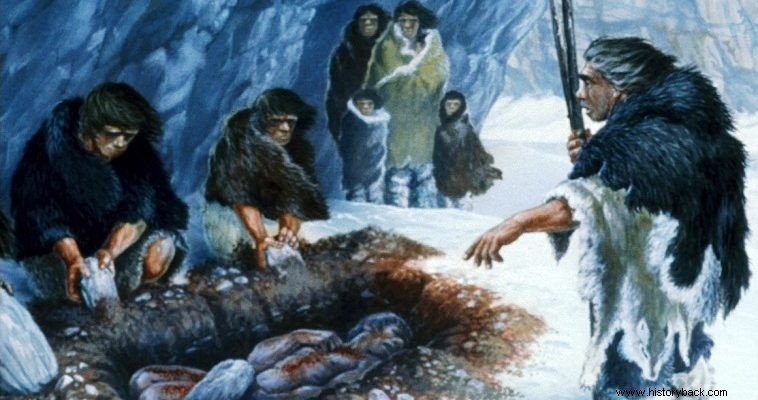
About 42,000 years ago the magnetic poles of our planet reversed (north became south and vice versa), which - combined with a simultaneous decline in the activity of the Sun - had the consequence of causing serious environmental and climatic changes , catastrophic events for various species of large animals, while it is possible that it also led to the end of the Neanderthals. That's the conclusion of a new international scientific study, which is expected to spark scientific controversy as it raises important questions about the evolutionary implications of occasional geomagnetic reversals.
The 33 researchers from different countries, who made the relevant publication in the journal "Science", based their estimates on a new, more accurate method of calculating radioactive carbon in the atmosphere, by analyzing the amount of radioactive carbon-14 in the successive rings of the largest New Zealand of "kauri" trees over 42,000 years old.
The change in carbon in the atmosphere, as reflected in the trees, is related to the increase in cosmic radiation reaching the Earth, thus revealing whether our planet's geomagnetic shield was working properly. The scientists then correlated this data with other data from around the Earth (lakes, ice cores, etc.), which show that a series of significant changes in the environment had occurred during the same period.
"Before the new study, we knew that many things were happening in the world 42,000 years ago, but we didn't know exactly how. For the first time, we have been able to precisely date what happened when the Earth's magnetic fields last reversed," said lead researcher Chris Turney of Australia's University of New South Wales.
The sphere of the Earth's magnetic field - produced by the movement of hot molten iron in the Earth's core - acts as a protective shield against cosmic radiation (high-energy particles from space), but is prone to chaotic changes that, among other things, push the magnetic poles to move. When the magnetic multiples switch positions with each other - something that has happened many times in the past - the shielding of the Earth's magnetic field weakens dramatically.
In the geological "record" of our planet there are many traces of the periodic reversals of the magnetic poles every about 200,000 to 300,000 years. Each reversal occurs gradually and can take hundreds to thousands of years. The most recent pole reversal lasting at most 1,000 years - the so-called "Laschamps" - occurred 41,000 to 42,000 years ago, but until now it has not been possible to draw useful conclusions about how much it affected the Earth's environment.
The new research concluded that when, during the evolution of the geomagnetic reversal, the Earth's magnetic field had weakened significantly, falling to only 6% of its current level, significant changes in the concentration and circulation of atmospheric ozone had been triggered. This, in turn, caused a chain of climatic and environmental changes (increased UV radiation, extreme weather conditions, very frequent lightning, expansion of ice and drought, "polar" aurora over the Equator, etc.), which affected the ecosystems and living beings, such as the extinction of large mammals.
Researchers think it is possible that even the flourishing of cave art at that time is because our ancestors Homo sapiens took refuge in them to protect themselves from the harsh environmental conditions. These probably also led to intensified competition with our "cousins", the Neanderthals, with the final result being the extinction of the latter after a few thousand years.
However, other scientists, such as glaciologist Dr. Anders Svensson of the University of Copenhagen, appeared more cautious that dramatic changes in climate and environment actually occurred 42,000 years ago, as they do not see such convincing evidence in the "record" of Antarctica and Greenland, but without to rule out the possibility. On the other hand, paleoanthropologist Chris Stringer of London's Natural History Museum said it is plausible to associate the weakening of the geomagnetic field with a greater use of caves, but not cave paintings, which are much older in parts of the world such as Indonesia. . On the same wavelength and the archaeologist Thomas Higham of the University of Oxford, who stated that "the conclusion (of the new study) is far-fetched".
Scientists cannot predict when the poles will reverse again. During the last 170 years of the modern era, the north magnetic pole has accelerated its movement at a rate of one kilometer per year and the Earth's magnetic field has weakened by about 9%. Scientists think it is possible that this indicates that a new reversal of the magnetic poles is slowly developing. They estimate that such a thing in our time would almost certainly cause major problems in modern electronic and satellite technologies, with all that this would entail for everyday life.
SOURCE:APE-ME
